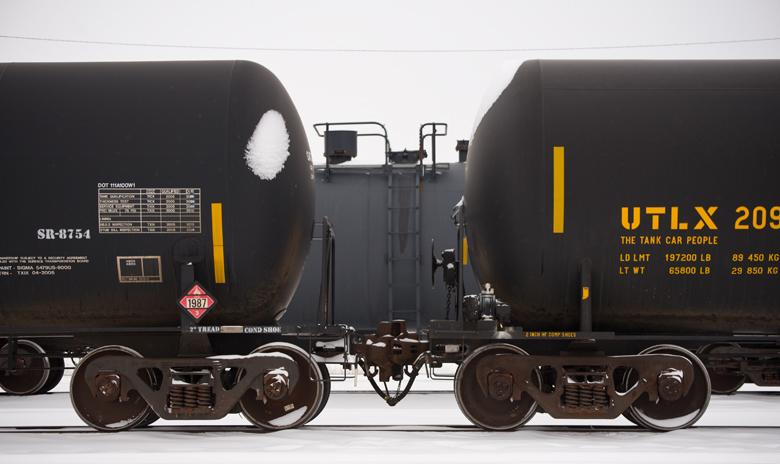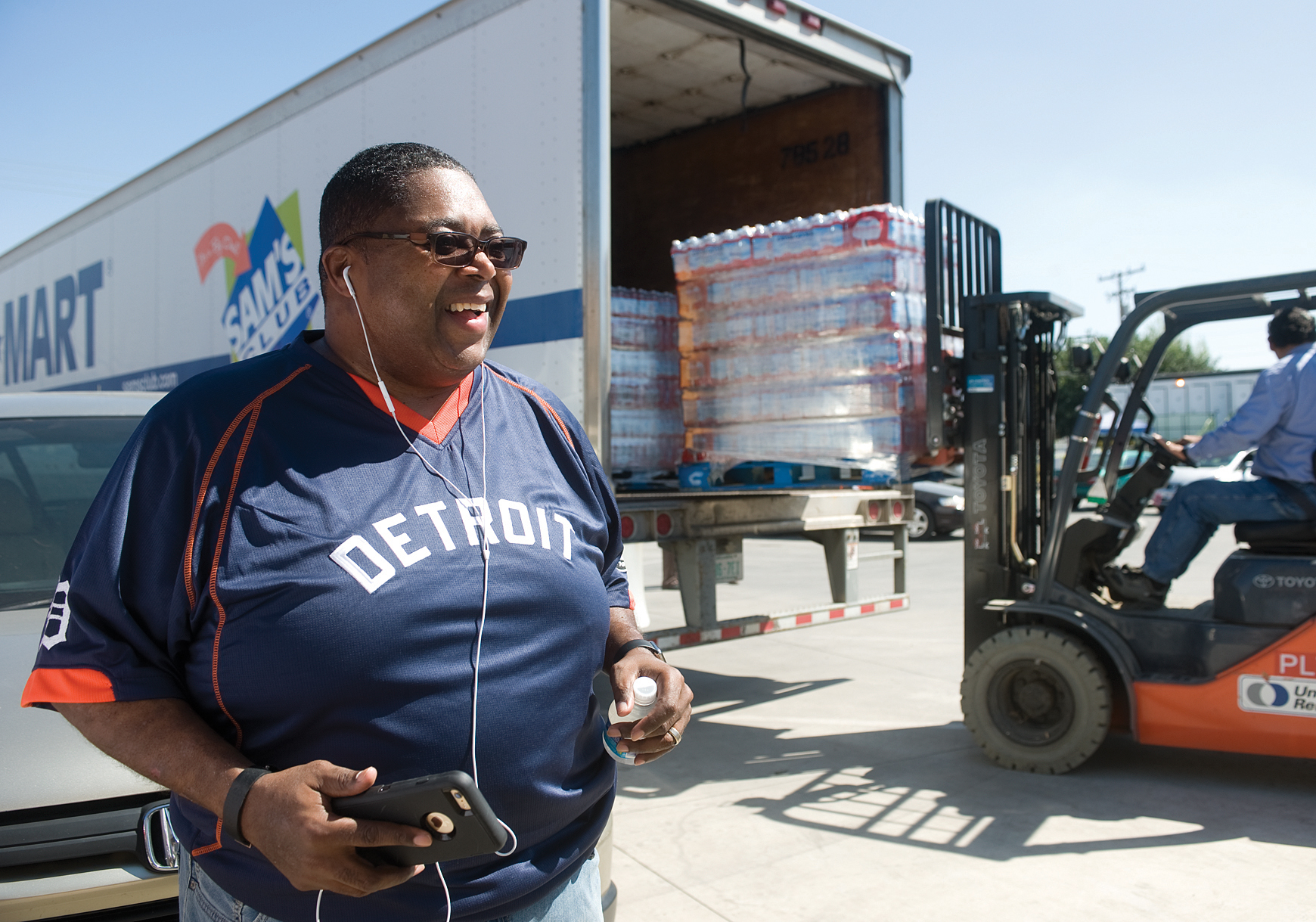Water Train Inc. is betting they are and is actively looking for partners in a test train to find out.
“Given the extreme measures some are taking in terms of extraction and a finite water supply, we feel the time is right to explore this option,” Water Train President David Rangel said when the project was announced in late August. While there’s been much talk of building pipelines from distant rivers and lakes to take water to farmers, those projects take years to plan and build, he said.
“The Water Train is ready now,” Rangel says.
Weeks later, a Water Train spokesperson tells Trains News Wire the company will refrain from speaking more about the project as it solicits public and private partners for a test train capable of hauling 190,000 gallons. The company says for actual service it has a fleet of more than 300 cars capable of delivering 154 million gallons during a growing season or about 1.9 million gallons per 100-car unit train.
Farmers don’t work in gallons, however. They talk in acre-feet, the volume of water needed to cover one acre to a depth of 1 foot. An acre-foot is 325,851 gallons, so 154 million gallons equals slightly more than 470 acre-feet.
“In the big picture that’s a relatively small amount of water,” says spokesman Dave Kranz of the California Farm Bureau Federation. “It would depend on all those logistical questions: How much is available at a time? How much would it cost? Where would it be coming from? Where would it be arriving?
One of those questions would be regulatory, Kranz says. Just moving water within the state triggers regulatory processes, and there likely would be added issues shifting water between states.
Water Train is a subsidiary of Modoc Railroad of Marion, Ill., owner of the Modoc Railroad Academy and billed as the only training railroad for new conductors and locomotive engineers in the country. The company has not said where it will get water other than from a source east of the Mississippi River approved by the Environmental Protection Agency for use in agriculture or groundwater recharge.
Invitations to participate in the test train were to be sent to several cities in California’s Central Valley as well as large water users, according to the company’s announcement.
Irrigated agriculture accounts for about 60 percent of water usage in California according to the U.S. Geologic Survey. The state, which produces nearly half of U.S.-grown fruits, nuts, and vegetables, is currently in a declared drought emergency after years of poor snow runoff, shrinking reservoirs, and dropping water tables.
The most likely car for the new water service would be the ones talked about so much in crude oil service: DOT-111 cars. After cleaned and certified safe for water use, the cars would carry about 19,000 gallons of water per car, according to Water Train. That’s about two-thirds the volume of a 30,000-gallon capacity DOT-111 car, but keeps the car within axle loading limits.
That leaves unanswered the question of whether farmers or cities would pay enough for water to cover rail operations and other expenses. Kranz says he’s heard of extreme cases where farmers in crisis paid as much as $2,000 an acre-foot to keep orchards alive.
“The economics is likely to preclude the idea before regulatory problems,” Dr. Jay R. Lund, Director of the Center for Watershed Sciences at University of California, Davis, says in an email to Trains News Wire, “The value of additional water in California during the drought is about $1000 per acre-foot, but is more like $300 per acre-foot or less in normal years.”
It would take 18 tank cars each carrying 19,000 gallons of water loaded as Water Train wants to, to deliver one acre-foot. Assuming free water at a source, each car would have to be delivered at about $55 each during emergencies or $16 during normal times.
Still, it’s not known how much growers might pay to stay in business, or what rail-hauled water might do to consumer prices. There is, of course, the standard dictum in the arid West that water runs uphill to money.
“Think of the Water Train as a giant water hose, able to be moved around to where water is needed today,” Rangel says. “While not a replacement for surface or subterranean sources, the Water Train does represent a business-sustaining option.”
















Now this seems to me to be a common sense approach to alleviating what is becoming an increasingly more common problem. Also, a loaded and ready-to-roll water train might be used in certain circumstances to haul water to help put out some of these wildfires in populated areas suffering from drought. Just a thought.
Water being used for agriculture and not for drinking/eating would/could fall under the rules for non-potable water and be treated in less stricter terms.
This is a concept I've often mentioned but never have gotten a response. I would go little further to have such an operation as Water Train be capable of moving to a flood stricken area in an emergency situation and be able to pump and take water away. Yes, it can be water for non human use requiring less handling and safe guards. And tank cars assigned to this kind of service certainly wouldn't be the same cars which previously carried chemicals and petroleum products; I really don't think there is a company that would think of doing or actually try to do that.
In further upgrade to my prior post: When a DOT-111 tank car is loaded to its weight capacity which is 2/3 it volume, the empty space could be filled with rubber balls of air which would prevent most of the water movement from sloshing. It also would permit the car being loaded to space capacity and the rubber balls would shrink when temperature expanded the volume wanting to overflow. Being water, pressure valve overflow would be no problem. But winter movement in frigid weather may endanger the cars if they became frozen.
Ed Ellis said it would cost about $3000 to clean DOT-111 cars in order to store them on his 29 mile line in the Adirondack mountain. The NIMBYS went nuts but it is fully legal for him to use his track for car storage. Only way anyone one could see the stored car was to use a canoe. He recently said he has not found cars to park at this time and may use the line to ship stone. I have suggested that North Creek, NY and Hoosic Tunnel, MA would be good locations to load clean water not affecting down river water which mixes with ocean water. Other costal rivers in Maine have sufficient extra water to spare.
Sloshing could be a serious derailment cause, and could be a cause for one or more oil train wrecks,( ex: Lynchburg) so top down baffles would need to be added within the tanks.
Finally, someone sees the benefit of using the railroads to alleviate the drought. As a Californian, the effects are real, and except for a very spots, our lawn is dying or dead.
Sounds like a good use for decommissioned DOT-111s, as nobody's going to worry about a tank full of water derailing and catching fire. Mind you, how easy are they to clean?
100 cars @ 19,000 gallons each equals 1.9 million gallons per train. Or 5.5 acre feet to be sold at a premium of $2000 per acre feet yields $11,000 in revenue. I don't think $11,000 in revenue will move a hundred car train very far.
I would ask is it legal to use a car used to haul non food grade chemicals(or oil) to haul a food grade product?
How much of a problem is it since these tank cars will only be filled 2/3 full? Surging and sloshing in the tank could cause unexpected problems.
I wonder where he's planning to get the water? The Great Lakes are out, years ago the bordering states had a Federal law passed preventing the exporting of Great Lakes water outside the water basin to keep them from being sucked dry to water lawns in California and Vegas.